1. Mornings Began with the Thud of the Paper on the Porch

There was a time when the world arrived folded in black and white, landing with a soft thud at the door. That sound started the morning, steady as an alarm clock. Rain or shine, a bundle of stories hit the porch, tied in string and smelling faintly of ink. Parents reached for it first while kids trailed behind, eager for the comics. The whole house seemed to wake with the rustle of pages. It was more than routine, it was connection. Before screens and scrolls, that paper was how we touched the world, one headline at a time.
2. Paperboys Were Neighborhood Legends
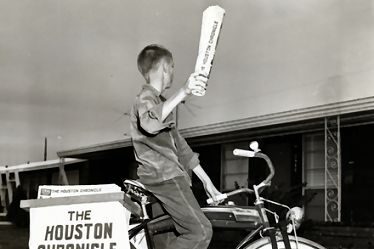
Every neighborhood had its heroes, and they rode bikes at sunrise. Paperboys pedaled through quiet streets, their baskets stacked with folded news. Some aimed for porches, others missed by a mile, but everyone respected their effort. Rain, barking dogs, and icy mornings made each delivery feel like a challenge. The job taught more than balance; it taught discipline, independence, and pride. Parents admired them, neighbors greeted them, and kids looked up to them. They were the first faces of the day, bringing not just papers but a sense of rhythm to every community they passed through before breakfast.
3. Black and White Pages Defined the News
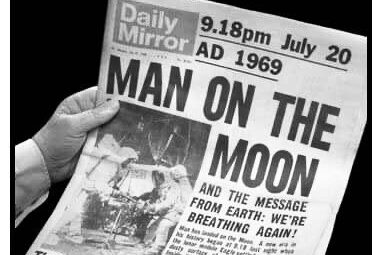
Before glossy layouts and digital screens, the newspaper was pure black ink on crisp white paper. Headlines stretched across the page, bold and certain, while photos sat in grainy gray squares. The words felt serious, permanent, and powerful. Readers trusted what they read because it was printed, tangible, and real. That contrast between dark letters and pale pages gave weight to every story. Even without color, the news carried life, emotion, and meaning. Those black and white pages were more than design choices; they were the foundation of how generations learned about the world each morning.
4. USA Today Shocked Readers with Color
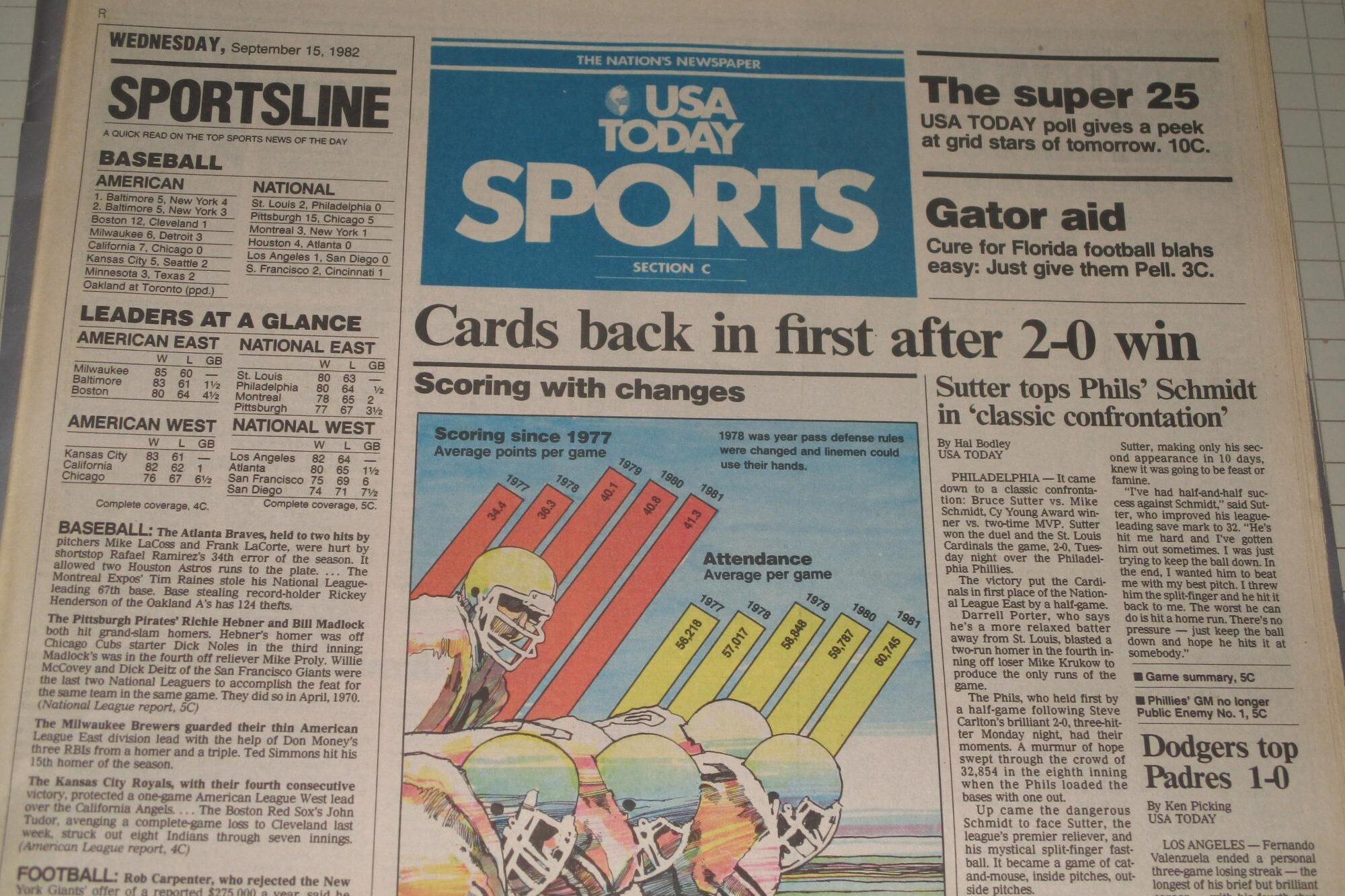
When USA Today hit the stands in 1982, readers couldn’t believe their eyes. Bright charts, colorful photos, and glossy pages broke from the past. Some thought it felt too modern, too flashy, but others loved the energy. It looked like television had leapt into print. The idea of color in the news seemed bold, almost rebellious, but it worked. Readers were drawn in instantly. Newspapers suddenly looked younger, fresher, and more alive. That single design change didn’t just sell more copies, it reinvented how information could feel. News became not just something to read, but something to see.
5. The Morning Coffee and Paper Combo Was Sacred
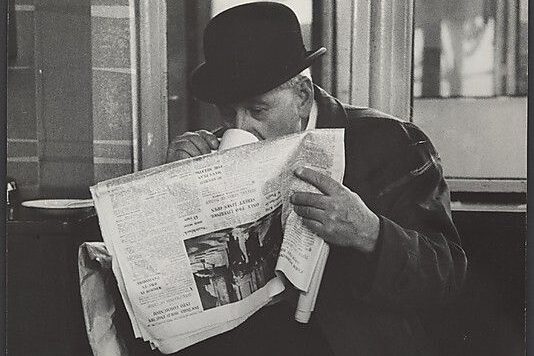
Every morning felt complete when the paper landed beside a steaming cup of coffee. The smell of roasted beans mixed perfectly with fresh ink. Parents spread pages wide across the table while kids peeked around them, waiting for the comics. The sound of turning paper filled the kitchen as sunlight caught the headlines. It was quiet, familiar, and comforting. The world could wait; first came the ritual. Those slow mornings weren’t just about caffeine or catching up. They were about routine, reflection, and the feeling that you were part of something bigger, one sip and story at a time.
6. Newsprint-Stained Fingers Were a Badge of Honor

Reading the newspaper left its mark, literally. Every serious reader ended up with smudged fingertips and gray streaks across napkins and pants. It wasn’t a mess; it was a sign of engagement. People wore those stains proudly, proof that they had touched real stories. Kids traced cartoons, adults folded headlines, and everyone left fingerprints on the day’s news. The faint metallic smell of ink lingered long after the last page was turned. It felt human, imperfect, and alive. Before news came from glass screens, it came from paper that rubbed off on you and stayed there for hours.
7. The Sunday Paper Was a Giant Event
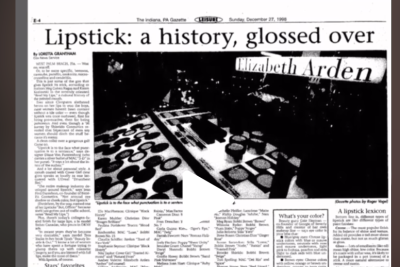
Sundays weren’t just for rest; they were for reading. The paper arrived heavier than usual, thick with inserts, comics, and glossy ads. Parents spread sections across the floor while kids grabbed the funnies first. Coupons rustled beside book reviews and local headlines. There was something luxurious about taking time to explore every page. Some families made breakfast last longer just to finish it all. The Sunday paper wasn’t just information, it was experience. For a few quiet hours, the world slowed down to the sound of turning pages and the comfort of shared discovery over coffee and conversation.
8. Comics Were the Crown Jewel
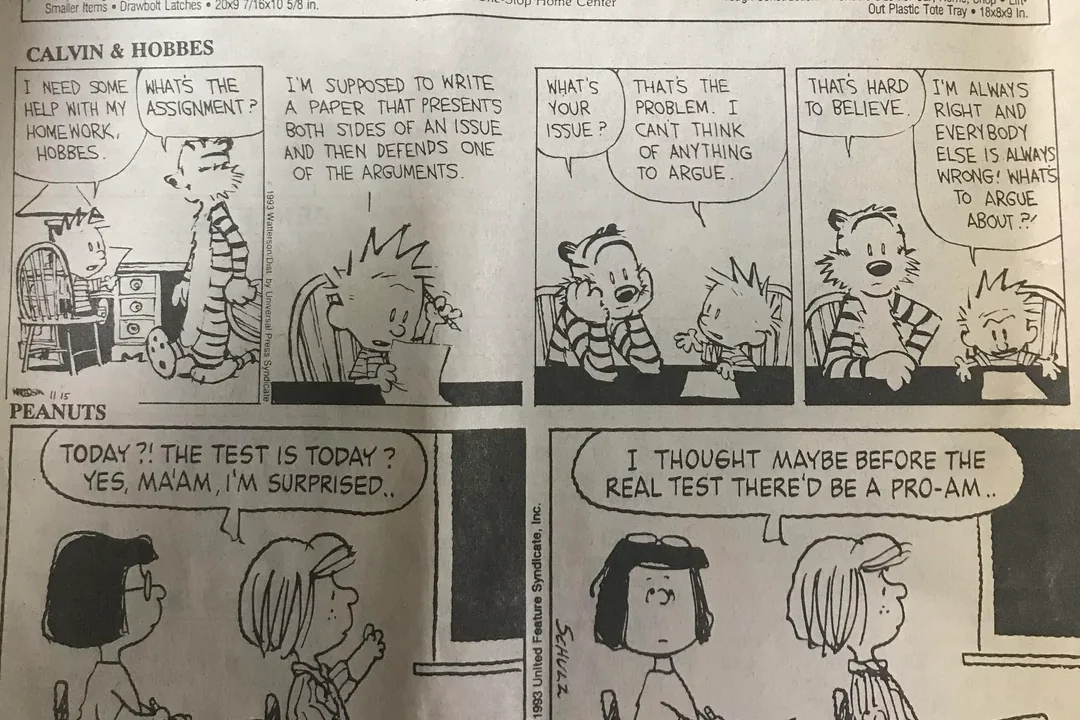
Every kid knew where to start. Before politics or business, there were laughs in the comics section. Calvin and Hobbes, Peanuts, Garfield, and The Far Side filled mornings with color and wit. Parents pretended not to peek, but everyone read them eventually. The best ones stayed taped to refrigerators or tucked in school notebooks. Comics weren’t just entertainment; they were comfort and escape. The Sunday funnies arrived like friends who never disappointed. In those few panels, humor met truth, and life felt lighter. Even grownups could admit that a good laugh sometimes said more than the headlines did.
9. Silly Putty Made Comics Interactive
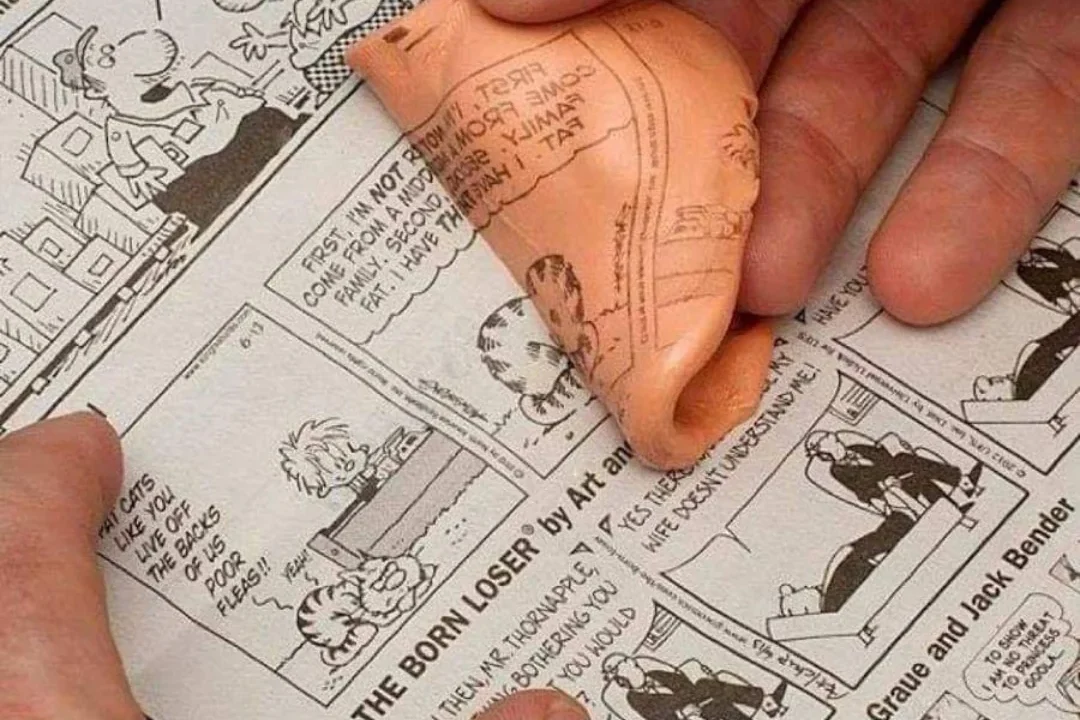
For every kid with a pink egg of Silly Putty, the newspaper became a playground. You could press it onto the comics, lift the ink, and stretch faces into funny shapes. Garfield’s grin, Snoopy’s dance, Calvin’s chaos, all warped into laughter. It felt like magic, a mix of science and silliness. Parents rolled their eyes, but secretly joined in. Those little eggs turned the daily paper into an art experiment and toy combined. Every Sunday left the comics section slightly smudged, a sign that imagination had been at work. Simple joys like that made newsprint feel alive.
10. Comics Often Lived on Bedroom Walls
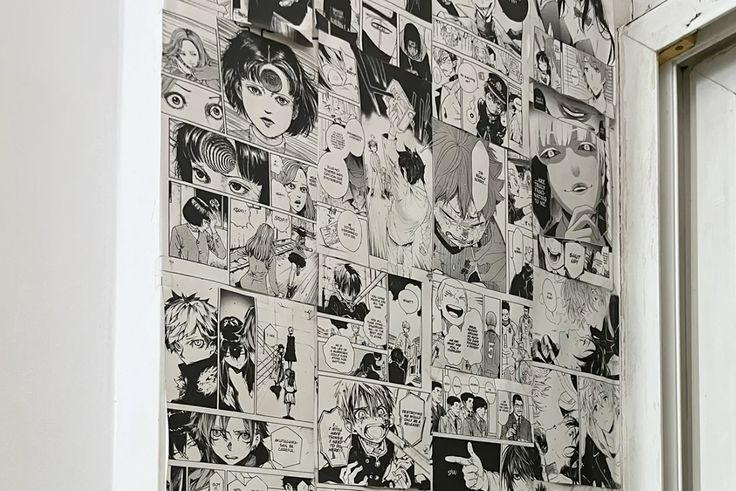
Before Pinterest or phone wallpapers, there were bedroom walls covered in taped-up comic strips. Kids clipped their favorite panels, saving bits of humor and wisdom that never faded. Calvin’s daydreams, Garfield’s sarcasm, and Lucy’s advice hung beside drawings and report cards. The paper yellowed with time, but the jokes stayed sharp. Some strips even made it to family refrigerators, surviving years of magnets and grocery lists. Those tiny squares of ink became inspiration, laughter, and sometimes comfort. The comics didn’t just entertain; they became memories themselves, reminders of mornings spent smiling before the day really began.
11. Crosswords Were Daily Mental Workouts
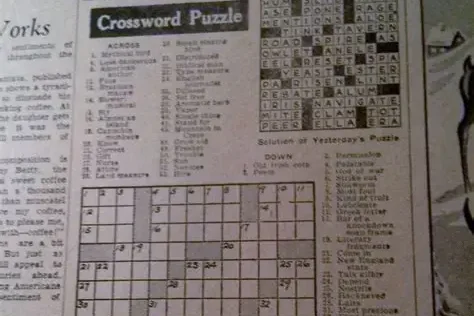
Crosswords turned breakfast into a challenge. Parents hunched over clues while kids peeked from the side, pretending to help. “Five-letter word for mistake,” someone would say, sparking family debate. Pens clicked, brows furrowed, and triumph arrived with one perfect answer. The crossword wasn’t just entertainment; it was a ritual of patience and pride. Even unfinished puzzles felt satisfying. Some people kept newspapers just to finish later. The black-and-white grid demanded thought, discipline, and a little humor. Each filled box was a small victory, a reminder that the mind, like the morning, worked best when fully awake.
12. The Jumble and Word Searches Filled the Margins
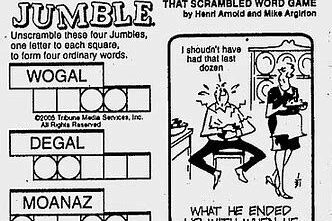
Not every puzzle had to twist your brain like a crossword. The Jumble and word search were the paper’s lighter side. Kids circled hidden words while parents groaned over scrambled letters. Solving even one word brought satisfaction, a quick win between sips of coffee. It was casual, relaxing, and always fun. Families sometimes raced to finish first, pencils flying. For some, those little sections were just as important as the headlines. They reminded everyone that the paper wasn’t all seriousness; it could be playful too, offering quiet joy in between the day’s heavier news and noise.
13. Horoscopes Added Mystery to Mornings
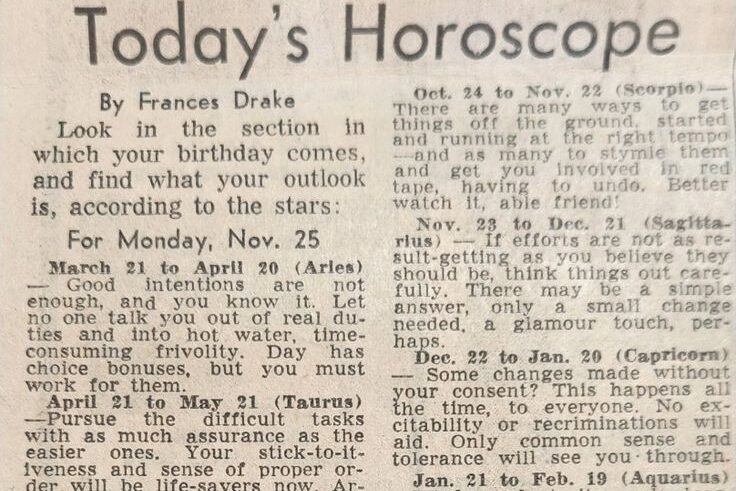
Tucked beside the comics or advice columns, horoscopes gave every reader a tiny thrill. They were vague, hopeful, and oddly accurate. Some believed, others just played along, but everyone checked their sign. “Good things ahead” could change the mood for a whole day. Circles, underlines, and quiet smiles followed those few sentences. Horoscopes turned newsprint into something almost magical. They offered possibility, even when the front page felt heavy. Whether they came true or not didn’t matter much. The charm was in believing that the stars might just have a plan waiting in black ink.
14. Advice Columns Shaped Conversations
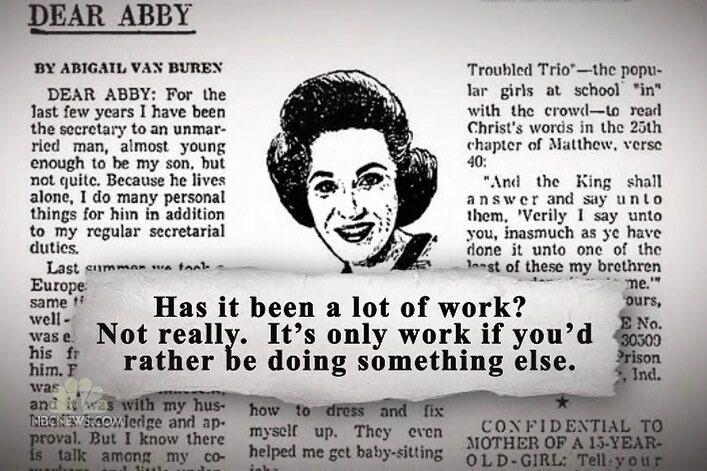
“Dear Abby” and “Ann Landers” became like wise relatives you never met. Readers wrote about heartbreak, family drama, and moral questions, and the advice felt timeless. The answers were honest, kind, and often witty. Families discussed them at dinner, debating what they would do. Some disagreed, others nodded silently. Advice columns weren’t just entertainment; they reflected real life, fears, and choices. They taught empathy, humor, and perspective through everyday letters. In a world full of noise, those columns made people stop and listen, proving that understanding often begins with someone willing to answer sincerely.
15. TV Listings Were Indispensable
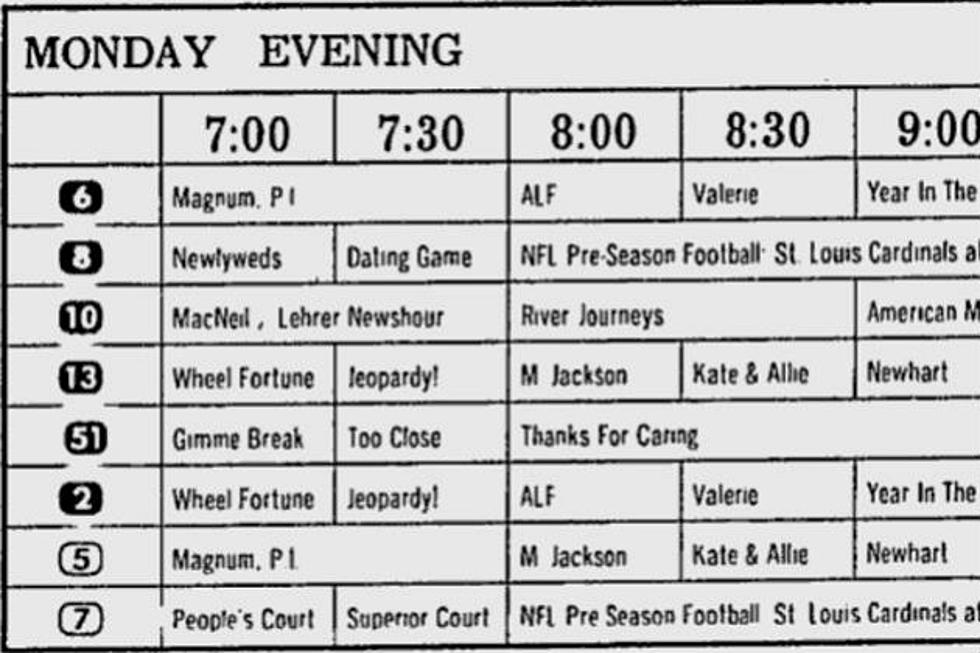
Before streaming, there were TV guides printed in tiny black boxes. Families planned entire evenings around them. Kids circled Saturday morning cartoons, parents marked favorite dramas, and everyone scanned for special holiday shows. The listings became the week’s blueprint. Missing a show wasn’t an option; you had to be on time. No rewinds, no replays, just presence. It was simple but special. Reading the TV section felt like unlocking secret treasures, programs waiting to entertain. Those pages brought excitement long before the screen even turned on, connecting families through one printed schedule at a time.
16. Classifieds Were Miniature Marketplaces
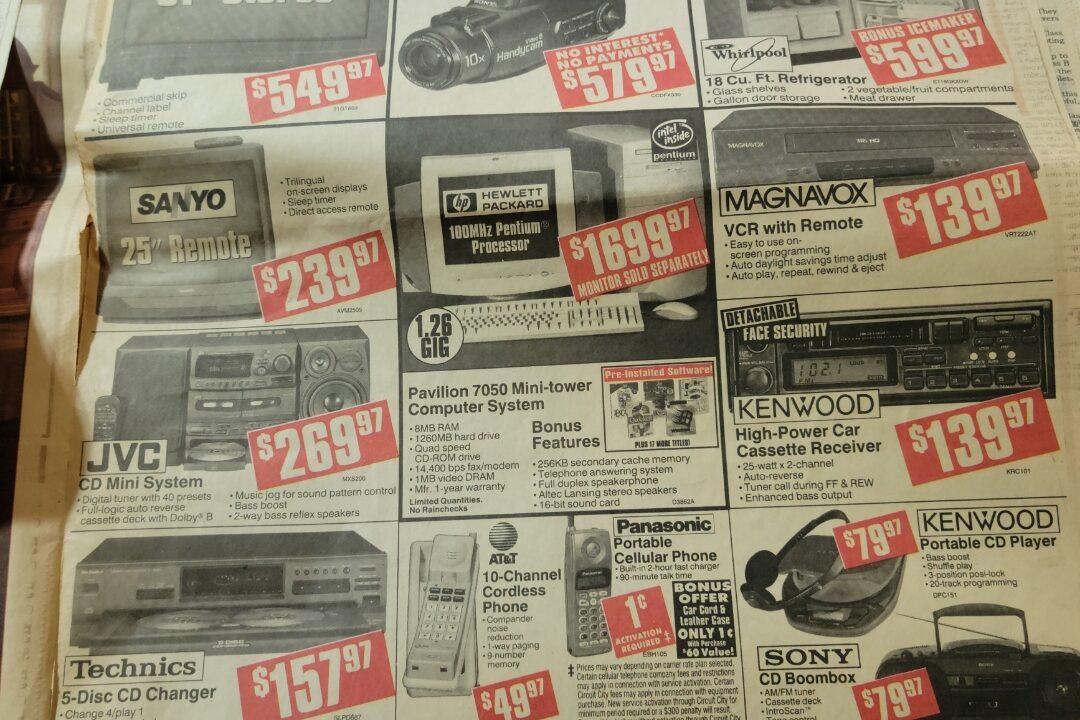
The classifieds were the hidden heart of the newspaper, where people sold, traded, and dreamed. Rows of tiny text held endless opportunity. You could find a car, a job, or a lost pet between those small print boxes. Parents circled ads with pens while kids watched curiously. The sound of flipping pages mixed with hope. Each listing felt like a doorway to something new, even if it was just a neighbor’s garage sale. Those simple black-and-white sections connected communities, one listing at a time, proving that newsprint wasn’t just about headlines but about everyday life.
17. Obituaries Carried Weight and Reverence
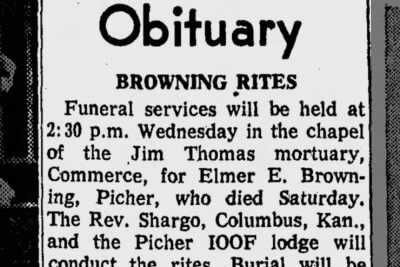
The obituary section was quiet and powerful. Families opened it carefully, eyes scanning for familiar names. Each entry told a life story condensed into a few lines, but filled with meaning. Readers learned about neighbors they’d never met, their kindness, achievements, and love. The tone was solemn, but never cold. It felt like respect printed on paper. People clipped obituaries, saving them like gentle reminders of shared humanity. In a world that moved fast, this section made everyone pause, reflect, and remember that behind every headline was a life worth acknowledging.
18. Birth Announcements Balanced the Page
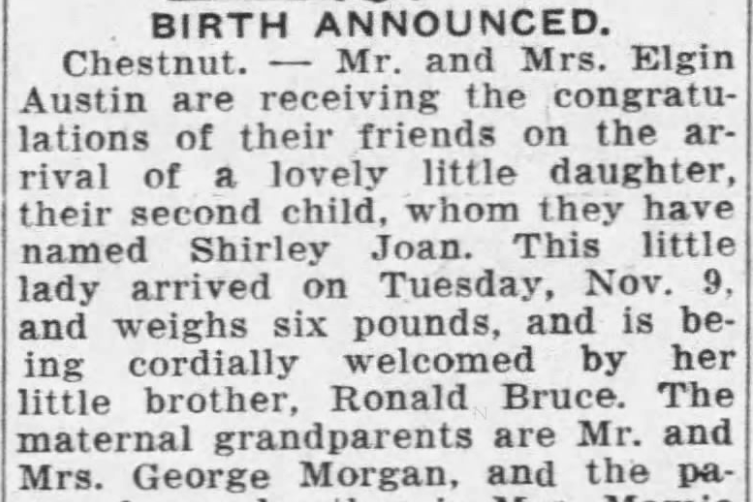
Beside the heaviness of loss came new beginnings. Birth announcements sparkled with joy and hope, listing names, weights, and proud parents. Families clipped and framed them, small proofs of happiness preserved in ink. For many, seeing their baby’s name in the paper felt monumental. It was the community’s way of saying, “Welcome.” In one section, life and death stood side by side, a reminder of how newspapers mirrored the cycle of existence. Those tiny entries filled pages with warmth, showing that among all the world’s headlines, the smallest stories could mean the most.
19. Coupons Stuffed the Sunday Sections
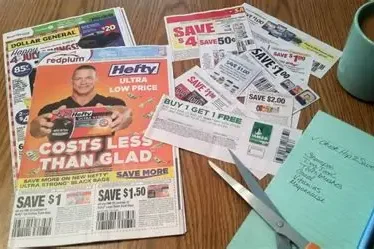
Sundays weren’t complete without a pair of scissors on the table. Parents clipped colorful coupons while kids helped sort them into piles. Every little cut promised savings on cereal, soap, or snacks. It was a family ritual that mixed fun with practicality. Envelopes of coupons sat in kitchen drawers like secret treasure maps to better grocery trips. The smell of ink mixed with the thrill of finding the best deal. Beyond the discounts, it was about teamwork, patience, and planning. Clipping coupons wasn’t just about saving money; it was about working together to make every penny count.
20. Job Seekers Circled Ads with Pens
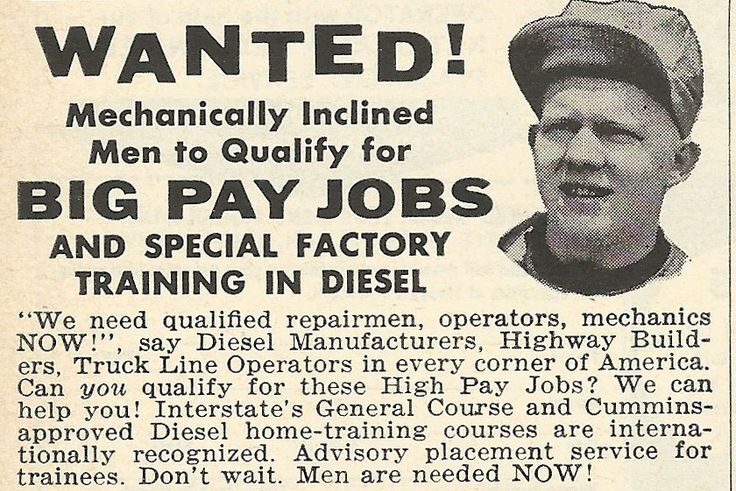
Before online applications, hope came in ink. Job hunters unfolded the classifieds and circled openings that sparked excitement. Pens marked dreams and possibilities. Phone calls followed, sometimes with nervous voices and shaking hands. Families prayed over job pages, believing in new beginnings printed in small font. The smell of paper carried ambition. Every ad was a chance, every circle a plan. It wasn’t just searching for work; it was searching for change. That quiet moment of scanning listings reminded people that persistence mattered, even when opportunity hid between the narrow lines of black ink.
21. Sports Sections Were Devoured by Fans
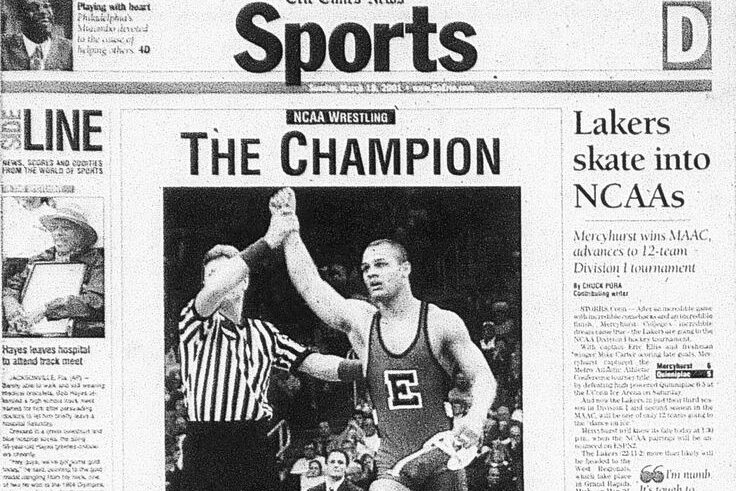
Sports pages were where passion lived. Parents unfolded them first, checking scores and standings before finishing coffee. Kids scanned for team highlights and favorite players. Names like Jordan, Ali, and Montana carried magic in print. Stats turned into stories, and victories turned into neighborhood debates. Fans argued, laughed, and cheered through ink. The sports section wasn’t just about games; it was about belonging. It gave readers a voice, a reason to talk, and something to look forward to each day. For many, the paper’s back pages felt more alive than the front.
22. Stock Tables Looked Like Secret Codes

The business section was filled with endless rows of numbers that fascinated adults and confused kids. Columns of tiny figures looked like secret formulas for success. Parents traced them with fingers, studying rises and falls like fortune tellers. For investors, it was serious work; for children, it was mysterious magic. Those pages whispered of money, risk, and reward. Before apps and charts, this was how people tracked their future. The stock tables turned ordinary mornings into lessons in patience and hope, showing that understanding the numbers meant understanding the rhythm of the world.
23. Political Cartoons Sharpened Wit
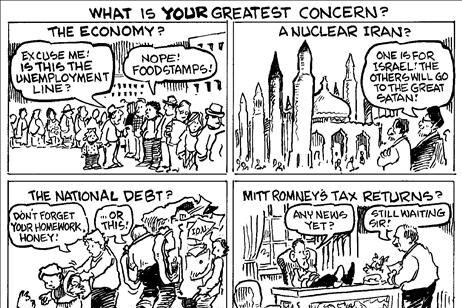
Nestled between editorials, political cartoons spoke louder than words. Caricatures of presidents, mayors, and scandals filled the page with clever humor. Adults chuckled knowingly while kids tried to understand the joke. The drawings simplified complex issues, using laughter to reveal truth. One small sketch could spark a bigger conversation around dinner tables. Political cartoons gave newspapers their personality, a balance of seriousness and satire. They showed that even in times of conflict, humor could unite readers, teaching that sometimes, a good laugh could cut sharper than any headline ever could.
24. The Smell of Newsprint Filled Homes

There was nothing like the smell of a freshly delivered newspaper. That faint, earthy scent of ink and paper filled kitchens and living rooms. It blended with morning coffee, eggs, and toast, creating a familiar aroma that meant comfort. Readers unfolded pages slowly, taking in both scent and story. It was sensory memory, one you never forgot. Even years later, the slightest whiff of print could bring back mornings spent around a table with loved ones. The smell wasn’t just nostalgic; it was proof that connection once had its own fragrance.
25. Extra Editions Marked Big Events
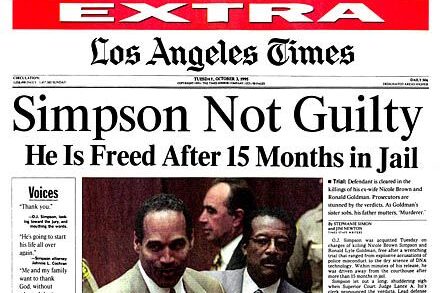
When huge news broke, the world didn’t wait for tomorrow’s edition. “Extra” papers hit the streets, hot off the press. Headlines shouted of wars, elections, or moon landings. People rushed to buy copies, holding history in their hands. Vendors yelled out updates, and strangers shared moments of awe. Each edition felt electric, alive with urgency. Those papers became souvenirs, folded and saved for decades. They captured emotion as much as information, proving that sometimes the biggest stories weren’t just read, they were felt the instant the ink dried on the page.
26. Cutting Out Clippings Preserved Memories
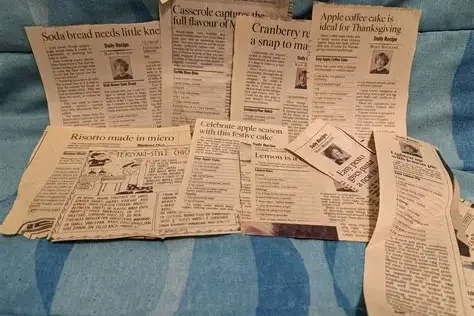
Before screenshots and shares, people clipped articles that mattered. A son’s graduation photo, a daughter’s debate win, or a neighbor’s story of kindness. Scissors snipped carefully, and yellowed clippings filled family scrapbooks. The paper wasn’t disposable; it was personal history. Some framed their articles; others tucked them away for safekeeping. Each clipping told a small story within the bigger story of life. Newspapers didn’t just report events; they captured identity, memory, and pride. Those folded edges and fading words became keepsakes of moments too special to be forgotten.
27. Newspapers Doubled as Craft Supplies
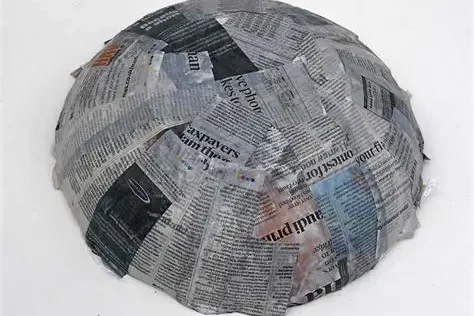
After the stories were read, the paper found a second life. Kids used it for papier-mâché projects, parents for cleaning windows, and teachers for art lessons. It wrapped gifts, lined cages, and protected floors from paint spills. The newspaper was practical, not just informational. It lived beyond its words, turning into whatever was needed that day. The same pages that told world news also held birthday presents and messy art dreams. In every home, it proved useful twice, once for learning and again for living.
28. Editorial Letters Gave Communities a Voice
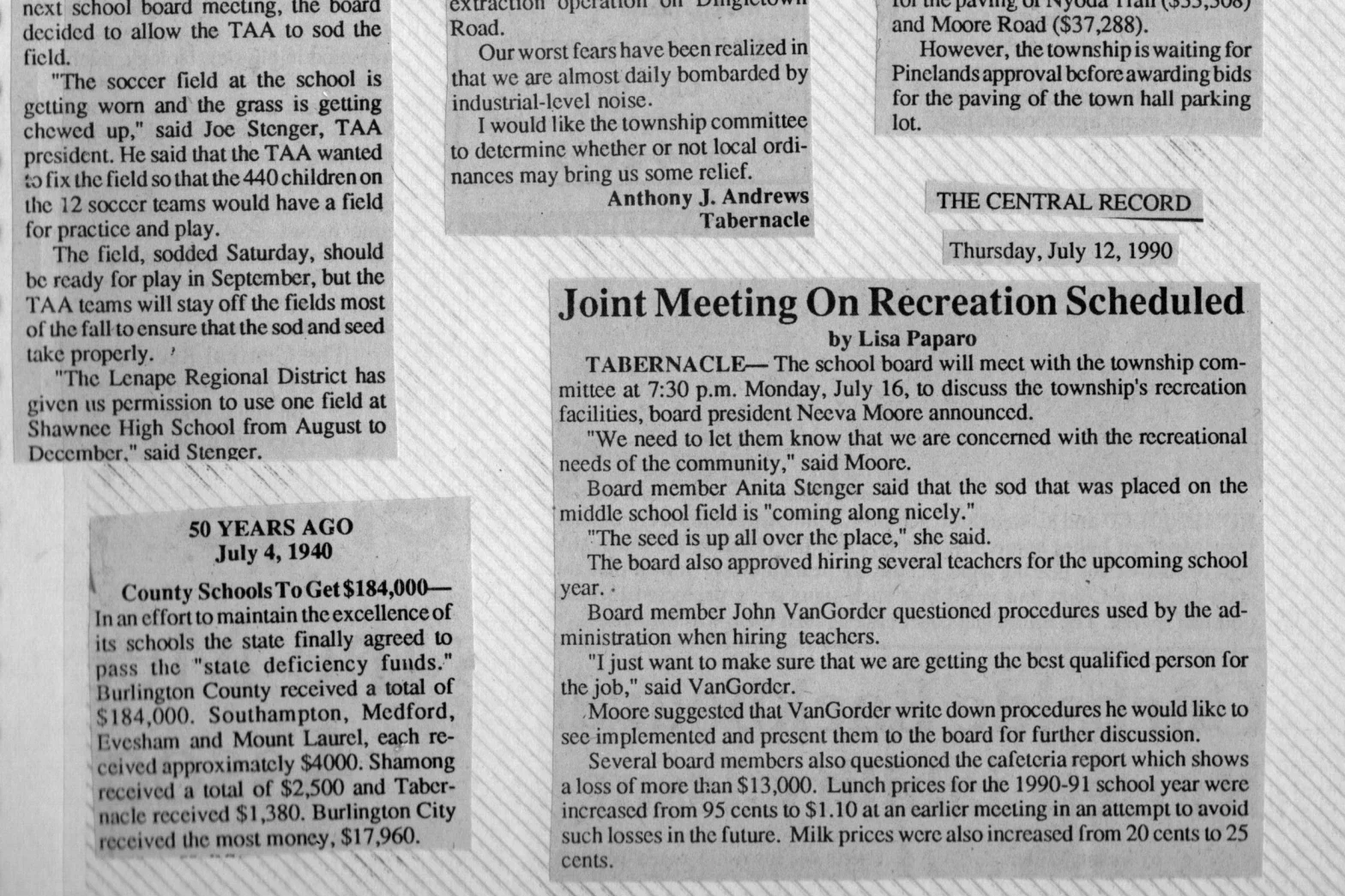
Letters to the editor were where ordinary people spoke back. Readers shared opinions, frustrations, and praise. It was democracy in its most personal form. Neighbors debated in print, not just in person. Some letters made others laugh, some made them think. Every published word felt powerful because it mattered. The page became a gathering place for ideas. Readers didn’t just consume news; they joined the conversation. Those letters turned newspapers into more than publications; they became reflections of the community itself, honest, loud, and always human.
29. The Slow Fade of Print Felt Bittersweet

The change did not happen overnight. Pages grew thinner, ads moved online, and fewer papers landed on porches. Morning routines shifted to screens. The quiet where the familiar thud once lived felt strange. People missed the smell, the feel, and the shared ritual. It was not just about losing print; it was about losing a slower rhythm and a daily meeting place. The decline moved gently, like watching a friend age. Yet the memories stayed, folded carefully in drawers and hearts, reminding us how turning pages stitched families and neighbors together, one simple morning at a time for many readers.
30. Newspapers Were More Than Pages They Were Community
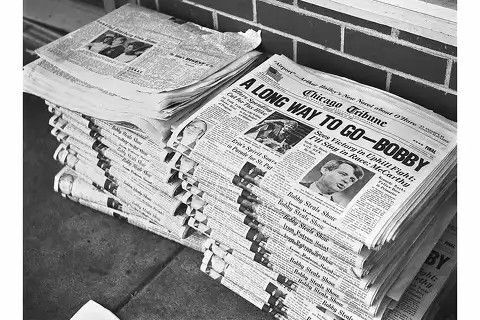
From funnies to obituaries, coupons to classifieds, the paper connected lives. It taught, entertained, and united neighborhoods in a way few things still do. The crinkle of pages, the smudge of ink, and the comfort of routine all stitched together a shared experience. Newspapers gave mornings meaning and stories a home. Even in a digital world, their spirit lingers. They were never just pages; they were people, places, and moments bound by ink. We may have moved on, but the memory of that paper pulse still beats quietly through us all.
This story Extra! Extra! 30 Memories of Newspaper Life was first published on Daily FETCH


